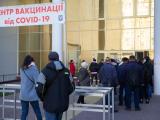Editor's Note: The headline and text of this story were corrected on April 15, 2023, with the correct subvariant: XBB.1.16.
The Omicron XBB.1.16 SARS-CoV-2 subvariant fueling India's surge is gaining traction in the United States, but so far the nation isn't seeing increases in cases, deaths, or hospitalizations, the US Centers for Disease Control and Prevention (CDC) said in its latest updates.
At the global level, overall cases and deaths continued to drop over the past 4 weeks, but some regions and individual countries are seeing notable case rises, the World Health Organization (WHO) said yesterday in its weekly update.
Also, the WHO vaccine advisory group that looked at the latest scientific evidence on vaccines and boosters said the bivalent (two-strain) versions appear to show broader immune response. The group said it will meet twice more this year to look at vaccine composition issues.
Newer variants cut into XBB.1.5 dominance
XBB.1.16 now makes up 7.2% of US samples, up from 3.9% the previous week, the CDC said in its latest variant projections. However, XBB.1.16 already makes up 21.3% of viruses in the south-central region of the country, which includes Arkansas, Louisiana, New Mexico, Oklahoma, and Texas.
Three other subvariants that still make up a relatively small proportion also gained ground: XBB.1.9.1, XBB.1.9.2, and XBB.1.5.1. Nationally, the proportion of XBB.1.9.1 is at 6.5%, up from 5.1% the previous week.
The CDC said the newer lineages could displace XBB.1.5. "At this time, the best ways to protect yourself and other from COVID-19 remain the same, regardless of which lineage causes infection."
In its weekly data summary, the CDC said the United States is averaging 14,491 new cases a day, down 17.3% from its previous 7-day average for new daily cases. About 190 Americans die from COVID-19 each day, down 25.5% from the last 7-day average for new daily deaths. New daily hospitalizations for COVID declined 14.6% from the previous week.
In other US developments:
- The CDC's Advisory Committee on Immunization Practices (ACIP) will meet on Apr 19, outside of its regularly scheduled meetings, to consider a potential recommendation for a second bivalent COVID booster, the agency confirmed to CBS News reporter Alexander Tin. Earlier this month, the Washington Post reported that the Food and Drug Administration (FDA) within the next few weeks was expected to authorize second boosters for those at highest risk, including those 65 or older and people who have weakened immune systems.
- The White House has asked federal agencies to revise their workplace policies to substantially increase on-site work at headquarters offices, according to Reuters, which saw the memo from the Office of Management and Budget.
Hot spots in India, Middle East
In its weekly update on the pandemic yesterday, the WHO said that, at the global level, cases and deaths continued their declines over the past 4 weeks, but levels for both are up in two of its six regions: Southeast Asia and the Eastern Mediterranean. It also said levels are rising in individual countries in other parts of the world.
The rise in Southeast Asia is led by India's steady surge in cases, fueled by the XBB.1.16 subvariant. Illness levels are also up in Indonesia. In the Eastern Mediterranean region, Iran, Qatar, and Saudi Arabia are among the countries with rising cases.
The WHO said XBB.1.5 is still dominant, but XBB.1.16 and XBB.1.9.1—recently added to its variants-under-monitoring list—are on the rise.
The latest weekly snapshot of COVID activity in Europe shows overall decreasing trends, but a mixed picture, the European Centre for Disease Prevention and Control (ECDC) said yesterday. For example, France has reported rising hospitalizations over the past 5 weeks in seniors, with Greece and Ireland also reporting rises in some of their metrics. Meanwhile, Latvia and a handful of countries in central and eastern Europe are reporting increased deaths.
WHO experts weigh booster composition
The WHO's technical advisory group on COVID vaccine composition met in the middle of March in Oman to review the performance of bivalent COVID vaccines and establish a timeline for a new recommendations for 2023.
In a statement today on the group's deliberations, the WHO said that, after reviewing the latest evidence, the group said both BA.1 and BA.4/5 booster versions provide a broader immune response than vaccine containing only the original virus. They added that the vaccines containing the BA.4/5 component prompt higher antibody titers to more recent Omicron lineages, as compared to boosters that have a BA.1 as the second component.
The group will meet twice more this year to review COVID vaccine composition, once in May and again about 6 months later.





















